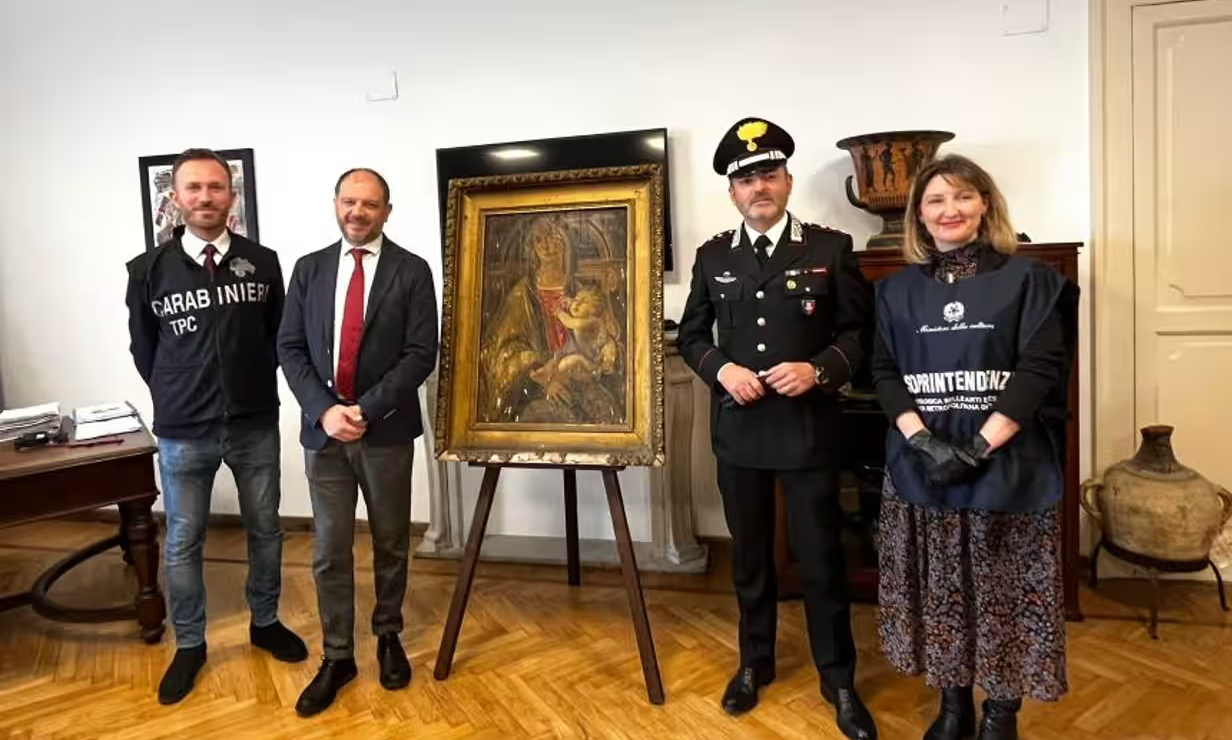
A prized painting by Italian artist Sandro Botticelli forgotten for 50 years has been discovered at a family home outside Naples, Italy.
The artwork was originally displayed in a small church in the Italian town of Santa Maria la Arita before being given to a local family who safekept it in their private residence for several generations. However, the painting—one of the last works by Botticelli and valued around €100 million (roughly the same in USD)—disappeared under mysterious circumstances, and after a fruitless search by the Italian state, was considered lost.
Massimiliano Croce, from the carabinieri, or Italian national police force, tasked with the protection of cultural heritage of Naples, said in a statement Wednesday: “The last time the authorities had inspected the private residence where the Botticelli painting was kept [was] over 50 years ago. Since then, inexplicably, the painting had been forgotten by the authorities. When, after research on these works to be inspected, we realized that a painting by Botticelli had been located in a private home for over 50 years, we decided to inspect it.”
The painting is dated to the 15th century and depicts the Virgin Mary and Child, though in a state of distress—the canvas is scarred by abrasions and chromatic deterioration due to the oxidation of its varnish, per the Guardian. The work is set for an extensive restoration, and may go on public display. Police must first investigate whether the painting rightfully belongs to the family who held it for half a century.
“The artwork had been passed down from generation to generation among members of this family,” Croce said. “But we are evaluating whether they acquired it properly…If we were to verify that the family who owned it was not entitled to keep it then it will pass into the hands of the state. Otherwise, it could remain the property of the family but exhibited in a museum to ensure greater security.”
In Italy, a painting of such cultural value can be owned by an individual only if its security and preservation is assured, according to Croce. If the individual is deemed capable by the state, the carabinieri will periodically inspect its conditions, which must be sterling.
Peppe Di Massa, an art historian, told La Repubblica that the painting was especially cherished by Botticelli, as the Madonna it depicts was based on Simonetta Cattaneo Vespucci, the artist’s muse and lover who died at 23.
“[Pope Sixtus IV] donated it to a small countryside church as a tribute to obtain economic support from the powerful Medici family to finance the completion of the Sistine Chapel during a period when the pope was struggling financially,” Di Massa said. “Many of us fought for this painting to be returned to the community when its traces were lost. They said it had ended up in a safety deposit box. Now we hope it can find its rightful place in a museum.”


